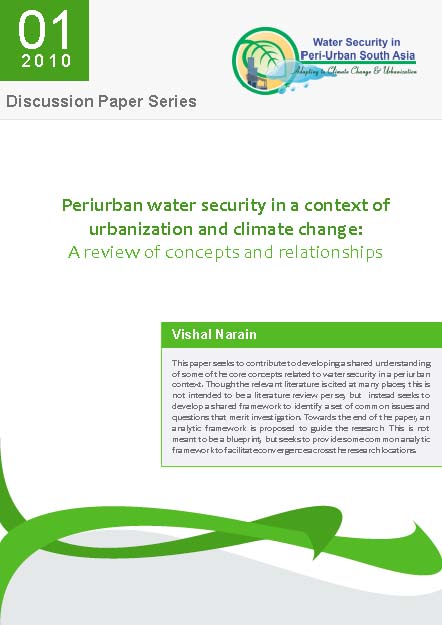Climate and Weather
Weather variability and rainfall pattern of Sidr, the post-monsoon cyclonic storm of November 2007 in the Meghalaya Plateau – A paper in Current Science
Posted on 25 May, 2011 07:52 PMAtmospheric depressions sometimes initiate tropical cyclones in the pre- and post-monsoon season in the Bay of Bengal, which move to land and create havoc. Their intensity and pattern vary individually.
Changes in extreme rainfall events and flood risk in India during the last century- A report by the India Meteorological Department
Posted on 21 May, 2011 05:53 PM The occurrences of some exceptionally heavy rainfall during the recent years causing flash floods in many areas necessitated the study of long term changes in extreme rainfall over India.
The occurrences of some exceptionally heavy rainfall during the recent years causing flash floods in many areas necessitated the study of long term changes in extreme rainfall over India.
The study includes the analysis of the frequency of rainy days, number of rainy days and heavy rainfall days as well as one-day extreme rainfall and return period analysis in order to observe the impact of climate change on extreme weather events and flood risk. It has been found that frequency of heavy rainfall events are decreasing in major parts of the central and north India while increasing in peninsular India, east and north east India.
The report provides interesting findings that are useful for hydrological planning and disaster managements such as –
Monsoon blues - Don't take the Met Department's "almost normal" monsoon prediction for 2011 for granted - Article by Devinder Sharma
Posted on 21 May, 2011 09:51 AMYou must have heard of the meteorological department’s monsoon forecast. It promises to be a near normal monsoon season from June-September with rains expected to be 98 per cent of the long period average with a 5 per cent variation. Sounds good.
Recession and reconstruction of Milam Glacier in Kumaon Himalaya – A paper in Current Science
Posted on 18 May, 2011 07:29 PMHimalaya is one of the youngest mountain systems on Earth, and has a direct influence on the climate, hydrology and environment of the Indian subcontinent. It is the abode of one of the world’s largest and mostly inaccessible area of glaciers outside the polar region and provides glacier-stored water to the major Indian river basins. Many of the Himalayan rivers are fed by snow and ice melt run-off from snow fields and glaciers.
Peri-urban water security in a context of urbanization and climate change - A review of concepts and relationships by SaciWaters
Posted on 17 May, 2011 04:05 PM
It is a part of the peri-urban water security project discussion paper series that aims at having a collection of research papers relevant to the concepts and processes involved in the project that represent preliminary ideas circulated to encourage discussion and comments.
Though the relevant literature is cited at many places, this is not intended to be a literature review per se, but instead seeks to develop a shared framework to identify a set of common issues and questions that merit investigation.
The paper argues that peri-urban can be better understood in terms of its characteristics - a mix of agricultural and non-agricultural land uses, flows of goods, services and resources between villages and urban centers and a social profile that is very heterogeneous and in a state of flux. All these impact upon the local natural resource base, creating particular environmental and natural resource management problems that are often beyond the scope of urban or rural governments alone and require innovative ways of being addressed.
Varunyantra to tap skywater: A Bhagirath effort
Posted on 17 May, 2011 03:51 PM
Although there is enough water in the world, it is rarely in the right place at the right time in the right quantity and quality.
Cloud seeding for India - An effective weapon to fight drought , saysProf. Shivaji Rao
Posted on 17 May, 2011 03:51 PMThe more the water wealth of a nation the higher will be the opportunities for achieving high rates of progress in the fields of agriculture production and industrial growth that help in promoting economic wealth, employment opportunities and higher standards of living. Hence the advanced countries are constantly upgrading their water resources by harnessing not only all the ground and surface waters but also by tapping a renewable, virtually unlimited and unexploited sky water resource in the atmosphere in the form of innumerable clouds. Enlightened scientists, bureaucrats, industrialists and statesmen in about 50 countries are frequently using cloud seeding operations for over 40 years for various purposes like
Future water solutions for India - a paper by Himanshu Thakkar in the Palgrave Development journal
Posted on 13 May, 2011 03:58 PMThis paper by Himanshu Thakkar published in the journal Development looks at the daunting challenges that future water demand places on India a
2nd National research conference on climate change, Indian Institute of Technology Madras(IITM), 11th – 13th July 2011, Chennai
Posted on 12 May, 2011 01:28 PMOrganizers:
- Indian Institute of Technology Delhi (IITD)
- Indian Institute of Technology Madras (IITM)
- Centre for Science and Environment (CSE)
Centre for Development Communication is looking Research Officer - Environment and Climate at Jaipur – Apply by 11th May, 2011
Posted on 11 May, 2011 05:47 PMContent courtesy: DevNetJobsIndia
Centre for Development Communication is a national level not for profit organization working for last more than 15 years in 18 cities across the country and internationally recognised by UN-Habitat by giving us prestigious Scroll of Honour Award for our best practices in India. Our key operational areas are solid waste management, urban health, women’s empowerment through SHGs, waste workers, street vendors and right to information.





